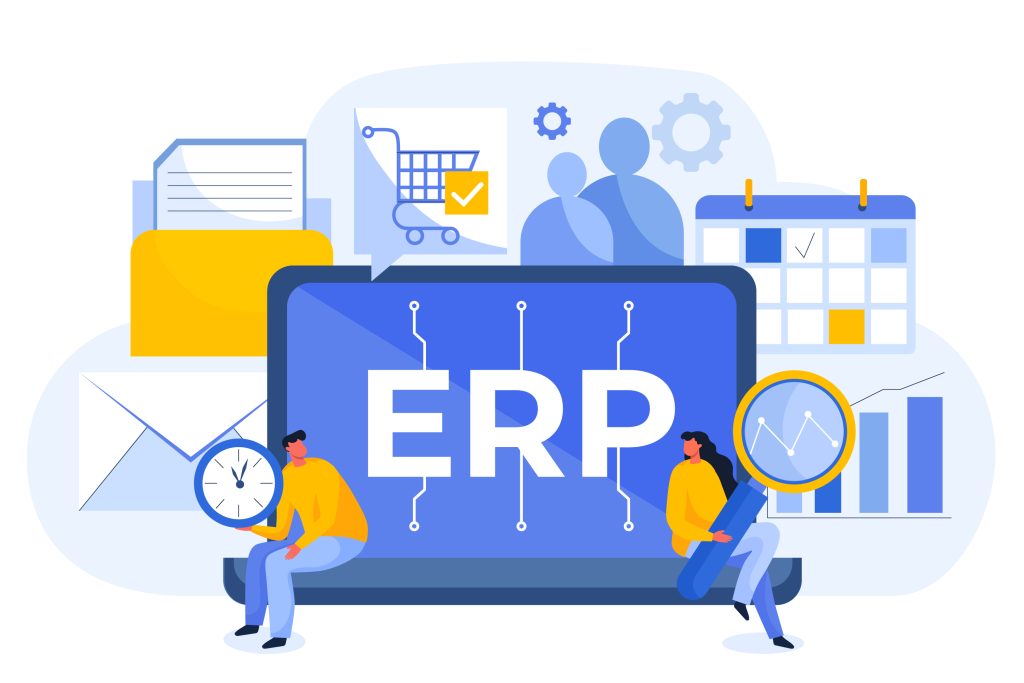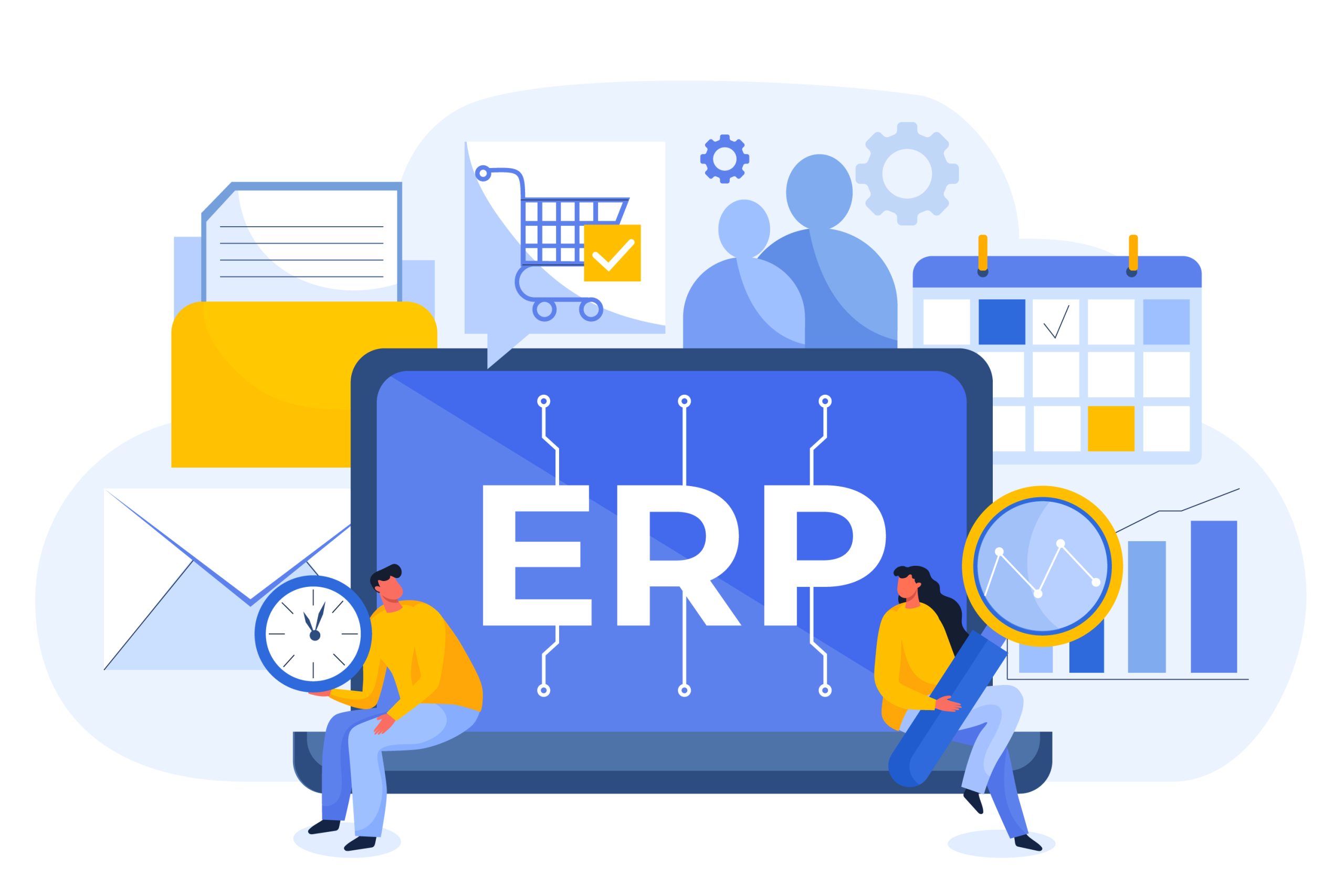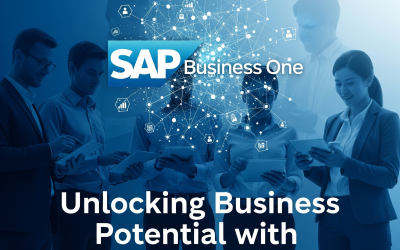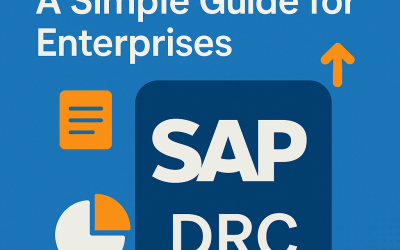For businesses today that operate in a very dynamic business environment, efficiency is not just a goal, but rather a requirement. Imagine a system that combines all of your business functions– finance, inventory management and so on– all in one place. That is where ERP Implementation come into play.
However, there is a problem: not every ERP installation confirms success. The ERP should be chosen according to your business needs. Choosing the correct ERP can be the difference between a smooth transition or a troubling one. This is necessary for the success of your business. You want to work on and learn how to make the appropriate choice for your company – correct? Let’s begin then!
ERP Implementation and Its Benefits

What Is ERP?
ERP stands for Enterprise Resource Planning. Think of it as the nervous system of your organization. It helps manage everything related to the business, from tracking sales to managing employee records, all in one system.
Using ERP solutions, organizations can work efficiently rather than just working hard. It ensures that the data is organized; hence every person is able to perform their tasks with ease.
Why ERP Implementation Strategies Matter?
Choosing the right ERP and the correct strategy for its implementation is the key. A good plan can help your company avoid mistakes and make the most of its invested money. When implemented properly, an ERP system becomes a time and cost saving investment for businesses. But a poorly executed implementation will not only create confusion and delays, but also add extra cost.
It’s like building a house: if you do not have a solid plan, then you end up with a very messy building.
Exploring ERP Implementation Strategies
As we now know what ERP is and why its implementation strategy matters, we will move on to the types of implementation strategy.
ERP implementation generally has four main strategies suitable for different businesses:
- Big Bang: activating all modules at once
- Phased Rollout: activating modules one by one
- Parallel Adoption: using old and new systems at the same time
- Hybrid Approach: customized mix of methods
This is a brief overview of strategy variations. Let us explore each in detail as they can determine the success of your business!
1. Big Bang Implementation
All ERP Modules are launched at once in this approach. Imagine it like pressing a switch- everything happens in an instant!
- Pros: Reduces the time of implementation hence quick return of investment (ROI).
- Cons: It needs a lot of prior work and resources.
- Best Suited For: Small to midsize companies with simple processes.
- Tips for Success: Concentrate on proper change management, do extensive testing, and train users so that the transition is as smooth as possible.
2. Phased Rollout
This is a process in which enterprises roll out the ERP modules one at a time. Think of it as building a house in which we build room by room.
- Pros: Reduced risk as it is done in stages. This makes problem solving easier as we have to focus only on the problem causing module.
- Cons: Long wait and risk of delayed return on investment.
- Best Suited For: Very large enterprises with complex processes.
- Tips for Success: Continue with high-impact module first, gather feedbacks and then move to next module.
3. Parallel Adoption
Involves running both the new ERP system and the older one until the users become familiar with the new one. Imagine it like using both, a flip phone and a touch smartphone until you are ready to switch completely.
- Pros: Fewer chances of risks, Plan B is available, and users can adapt slowly.
- Cons: Expenses are high, more workload, and chances of data duplication are high.
- Best Suited For: Organizations with business critical operations that require 24/7 uptime.
- Tips for Success: Establish clear data entry protocols and avoid very long time period of using both the systems.
4. Hybrid Approach
This method combines different elements from the different strategies which allows businesses to tailor the implementation to their needs.
- Pros: The process can be adjusted according to the need and the critical modules can be introduced gradually with less risk.
- Cons: Causes difficulty in managing mixed rollout methods.
- Best Suited For: Organizations having different needs depending on functions and locations.
- Tips for Success: Select some core modules for immediate implementation and then prepare a roadmap for additional modules. Also manage cross-departmental dependencies effectively.
Every strategy has its advantages and disadvantages. Knowing these can guide you in making the right decision for your business which ensures an easier migration to the new ERP!
How to Choose the Right ERP Implementation Strategy?
Selecting an ERP deployment strategy is not a picnic it is a very important decision that can shape the future of one’s business for the better. No need to panic! You should consider the size and structure of your company, the level of risk you can take, available money and other resources to narrow down the options in order to find the best fit.
Let’s simplify that and help you arrive at a decision that will give you a stress-free transition!
- Company Size and Structure: The chosen strategy should match the operational size and depth of your business. For example, a small startup may do well with a Big Bang approach, which means deploying every change at once. On the other hand, a big organization would most likely choose a Phased Rollout so that teams can adapt gradually.
- Risk Tolerance: Calculate how much risk you can take. For example, in sensitive industries like healthcare, people may adopt the Parallel Adoption method where both the old system and the new system are worked in for some time. On the other extreme, where the need for change is very urgent, a Big Bang would be more appropriate.
- Budget and Resources: There is a price for every tactic. Balance your budget with potential ROI. A Phased Rollout can take more time but in the end it is cheaper since it is aimed at reducing expensive mistakes.
- Timeline Requirements: Think about how soon you require the new system. If you are facing tight deadlines, then you should choose big bang approach. If you have some flexibility, a Phased Rollout is the best option.
Best Practices for Implementation Success
To ensure your ERP implementation is a success, follow these best practices:
- Set Clear Goals: Define what success looks like for you. Is it faster reporting or improved customer service. Clear goals will help you measure your progress.
- Get Management Support: Ensure management is on board and encourage teamwork across departments. When cooperation exists; the administration is efficient and communication is effective.
- Invest in Training: Start training early. Conduct workshops, and Q&A sessions to help users get used to the new system. This helps in ensuring that the new system is well adopted.
Considering these aspects and best practices, you shall be ready to select the most appropriate ERP implementation strategy for your organization!
Conclusion
For the success of your business, there is the need for an appropriate selection of ERP implementation strategy. Every strategy has its pros and cons; the decision of which is the best ERP implementation strategy is dependent on the requirements of the company. By analyzing the size of the company, the willingness to take risks, the amount of money available, and the duration of the project, you are able to select an implementation strategy that fits your goals.
If you’re unsure which ERP implementation strategy to choose, don’t hesitate to seek expert guidance. At Saisatwik Technologies, our specialized experience in delivering ERP solutions, including SAP and Salesforce, enables us to provide professional insights tailored to your business needs. Our project team is well-versed in the complexities of ERP implementation, and we’re committed to making the process smooth, efficient, and advantageous for your organization. Let us help you navigate each step, ensuring that your ERP system supports and strengthens your business goals.




0 Comments